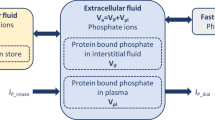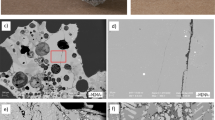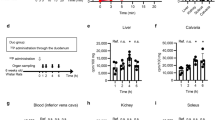Abstract
PHOSPHORUS enters as phosphate in the numerous compounds in which it is to be found in the animal body ; in connexion with the investigations carried out in recent years concerning the fate of ingested phosphorus atoms in the organism, it seemed to be of interest to determine whether or not, in the course of the numerous metabolic processes in which phosphorus is involved, the phosphate radical exchanges its oxygen content with other oxygen atoms present in the body. This question could be answered by injecting into an animal sodium phosphate which contained heavy oxygen (18O) as an indicator and then determining if the phosphate recovered in the urine, for example, contained more than the normal amount of 18O.
This is a preview of subscription content, access via your institution
Access options
Subscribe to this journal
Receive 51 print issues and online access
$199.00 per year
only $3.90 per issue
Buy this article
- Purchase on SpringerLink
- Instant access to full article PDF
Prices may be subject to local taxes which are calculated during checkout
Similar content being viewed by others
References
Blumenthal and Herbert, Trans. Faraday Soc., 38, 849 (1937).
Datta, S. C., Day, J. N. E., and Ingold, C. K., J. Chem. Soc., 1968 (1937).
Huffmann and Urey, Ind. Eng. Chem., 29, 531 (1937).
Manian, Urey, and Bleakney, J. Amer. Chem. Soc., 56, 2601 (1934).
Author information
Authors and Affiliations
Rights and permissions
About this article
Cite this article
ATEN, A., HEVESY, G. Fate of the Sulphate Radical in the Animal Body. Nature 142, 952 (1938). https://doi.org/10.1038/142952b0
Issue date:
DOI: https://doi.org/10.1038/142952b0



